Are you considering growing luffa in your garden? It’s easy to grow, especially in hot climates.
I grow luffa every year for both the sponges and for eating. They are a beautiful trellis plant with plenty of benefits.
Here’s how you can grow luffa in your home garden too!
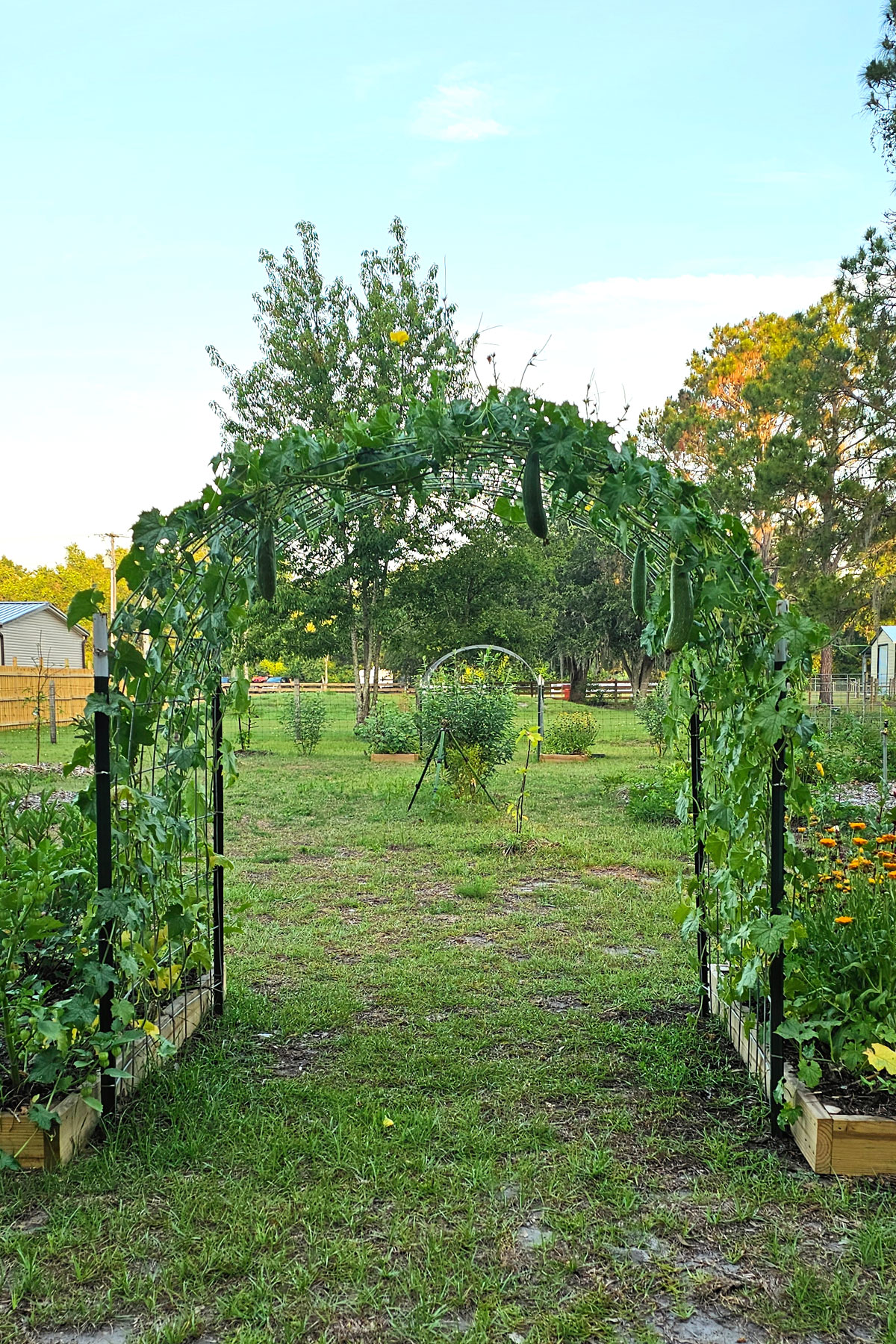
Table of Contents
- What is Luffa?
- Where to Grow
- Plant Growth
- Pests and Diseases
- Healthy Growing Tips
- Harvesting to Use as a Sponge
- Harvesting to Eat
- In Conclusion
- FAQs
- References
What is luffa?
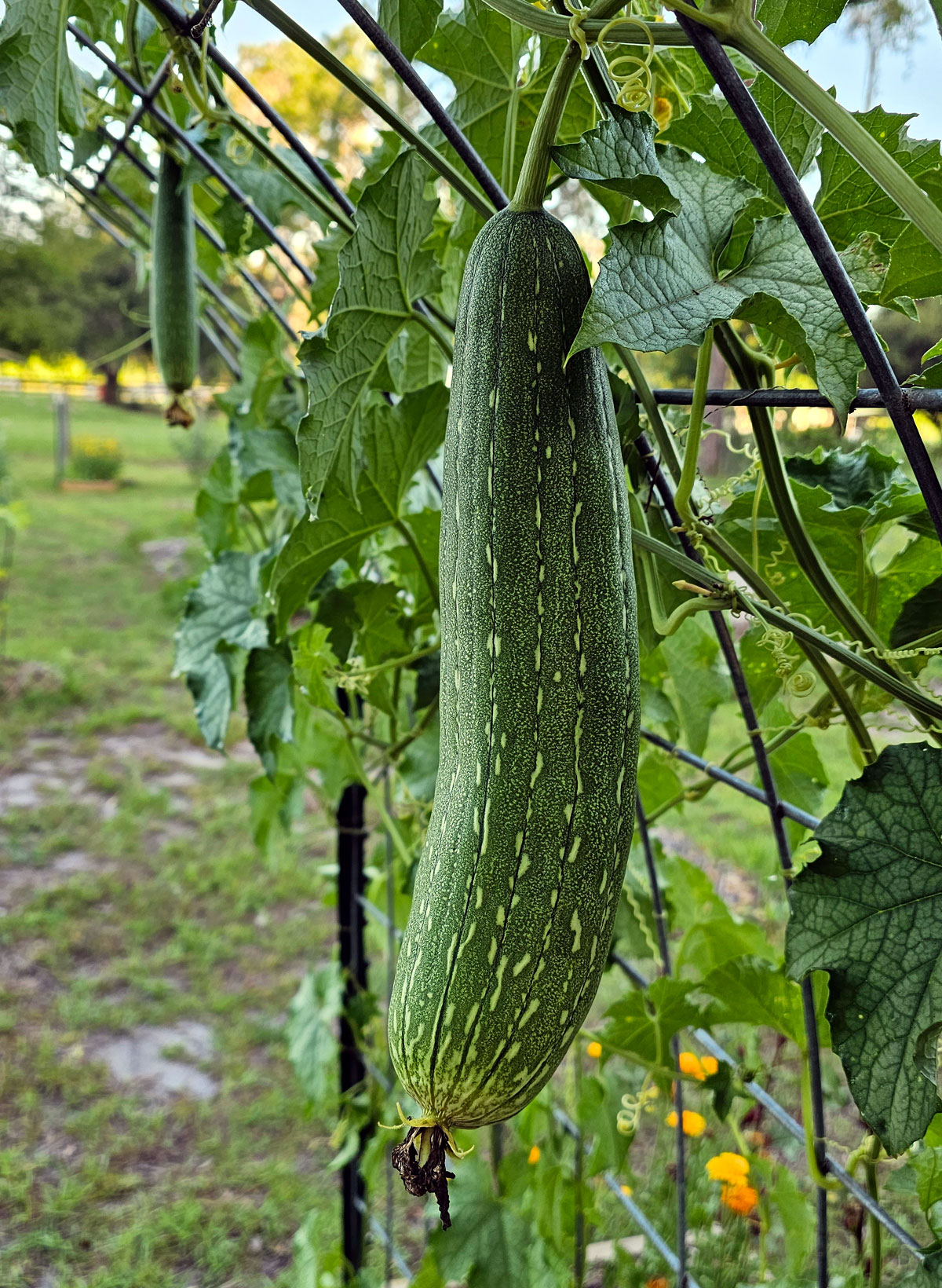
Luffa is a plant that produces a fibrous gourd and is a member of the Cucurbitaceae family. There are two main types of luffa: Angled Luffa (luffa acutangula) and Smooth Luffa (luffa aegyptiaca).
The luffa plant needs a long growing season of at least 200 warm/hot days and a supporting trellis. Luffas are primarily grown in subtropical and tropical regions. However, extended growing techniques such as starting early in a greenhouse can give the plants enough time to produce full-grown fruits.
Both types can be eaten and their gourds can be used as natural sponges.
Angled luffa is grown primarily for eating. It originated in South Asia and tastes like cucumbers. It also goes by other names such as Chinese okra, ribbed luffa, and silk squash.
Smooth luffa is grown for its fibrous, spongy gourd. It is also edible, and best to eat when six inches or smaller in length. To use as a sponge, a gourd needs to be grown to full maturity and allowed to start drying on the vine. Once it is harvested, the ends are cut off and seeds shaken out. The gourd can then be gently cleaned, bleached, or used as is for many purposes including:
- Biodegradable cleaning sponge
- Crafts like sponge painting
- Gardening for seed starting or soil amendment like coconut coir
- Natural decoration around the home
When choosing to grow luffa, choose the variety that will best serve your purpose.
Where to Grow
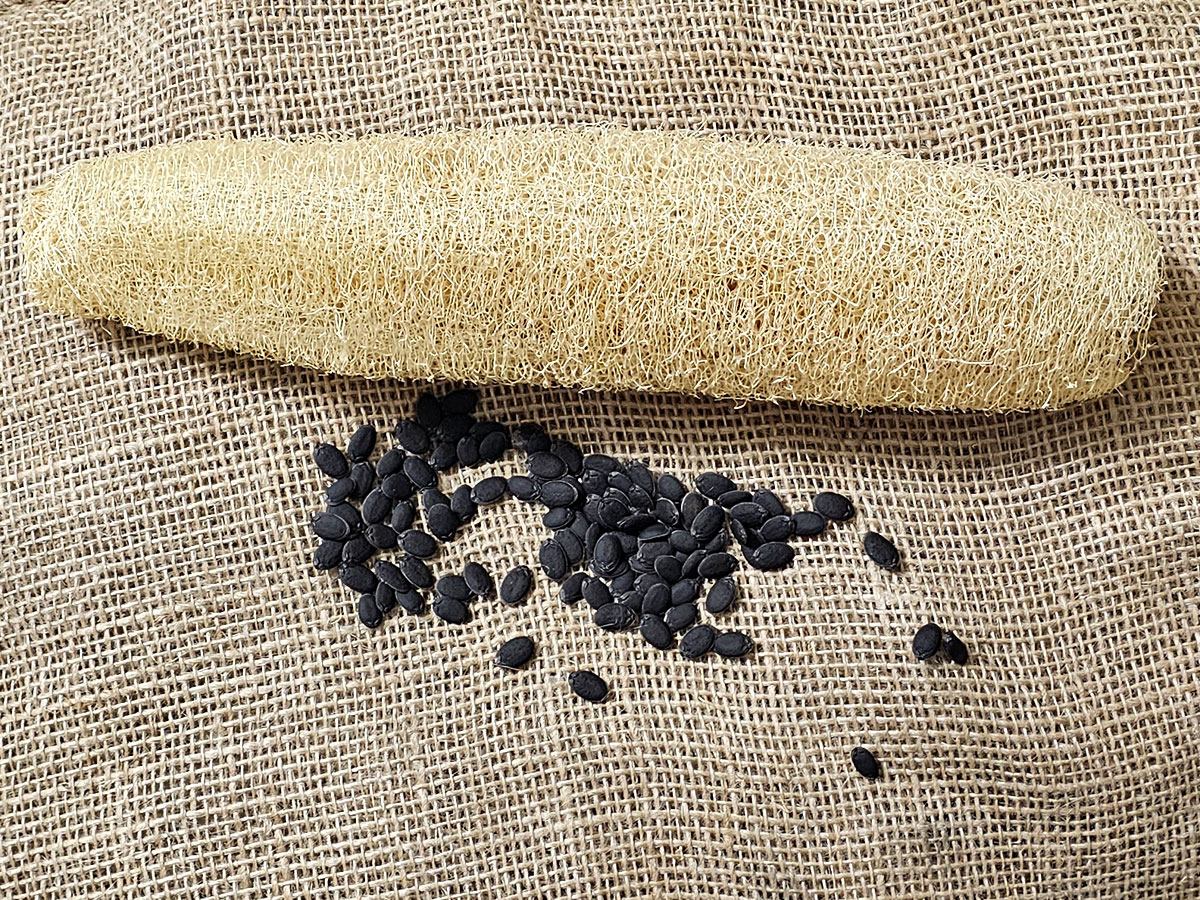
Luffa seeds are hard and black, about the size of a pumpkin seed. Some varieties may have a pitted edge, or be white in color.
Before planting your seeds, it’s a good practice to scarify the seeds. This simply means rubbing the seed gently with a piece of sandpaper or file, or giving the edge of the seed a tiny nick. The purpose of this is to crack the shell to encourage faster and easier sprouting. This is an optional step and you must be very careful not to damage the inside of the seed with this process.
Plants grow best from direct seeding in soil that is between 70°F and 80°F. They need a well-draining soil with a good amount of compost and/or humus soil. Optimal soil PH is between 6.0 and 6.5 range.
Choose a location that gets at least 6 hours of full sunlight every day. These plants love the heat! They will also need a trellis of some sort to support the vines so that the fruits can hang as they grow. I like to use a cattle panel arch to grow my luffa vines.

Plant Growth
Seeds germinate around 10-12 days from planting. Space the plants approximately 18 inches apart. This will ensure enough space for roots and less competition for nutrients and water. Water regularly and keep the soil most, but not wet.
As the plants grow, gently assist them in climbing the trellis at first. They grow in random directions and up to 20 feet long, so you may have to guide them to spread evenly across the trellis. This will help all the leaves receive enough sunlight and allow air flow to prevent diseases.
Pests and Diseases
Luffa are susceptible to powdery mildew, cucumber beetles, and aphids. Use organic fungicides and pest prevention methods sparingly, especially if you will be eating the fruit. Remove any dying or diseased leaves you find.
Healthy Growing Tips
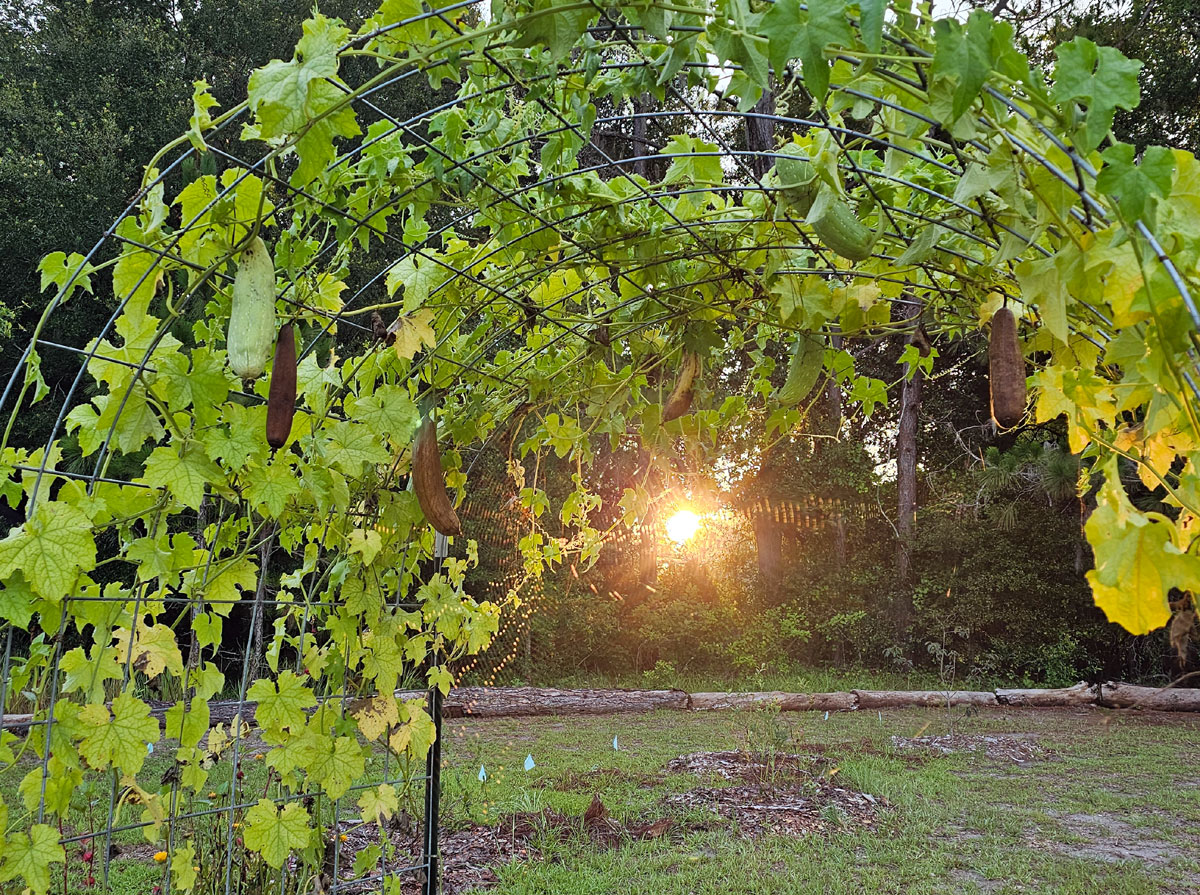
There are always going to be insects attracted to your plants as well as diseases transmitted by insects and through the air. Healthy soil will keep your plants strong and enable them to better defend themselves from pests and diseases.
Feed your plants a balanced fertilizer every 3-4 weeks. I use an organic fish fertilizer. These fertilizers are full of vitamins, proteins, amino acids, and micronutrients that can’t be found in a standard NPK fertilizer.
Water your plants at the base where the vine meets the soil. Overhead watering is not recommended because it could encourage the spread of powdery mildew.
Companion plants are not needed. They are a strong and vigorous vine. If you still wish to grow something alongside them, try marigolds, oregano, nasturtiums, or tarragon.
Harvesting Luffa to Use as a Sponge
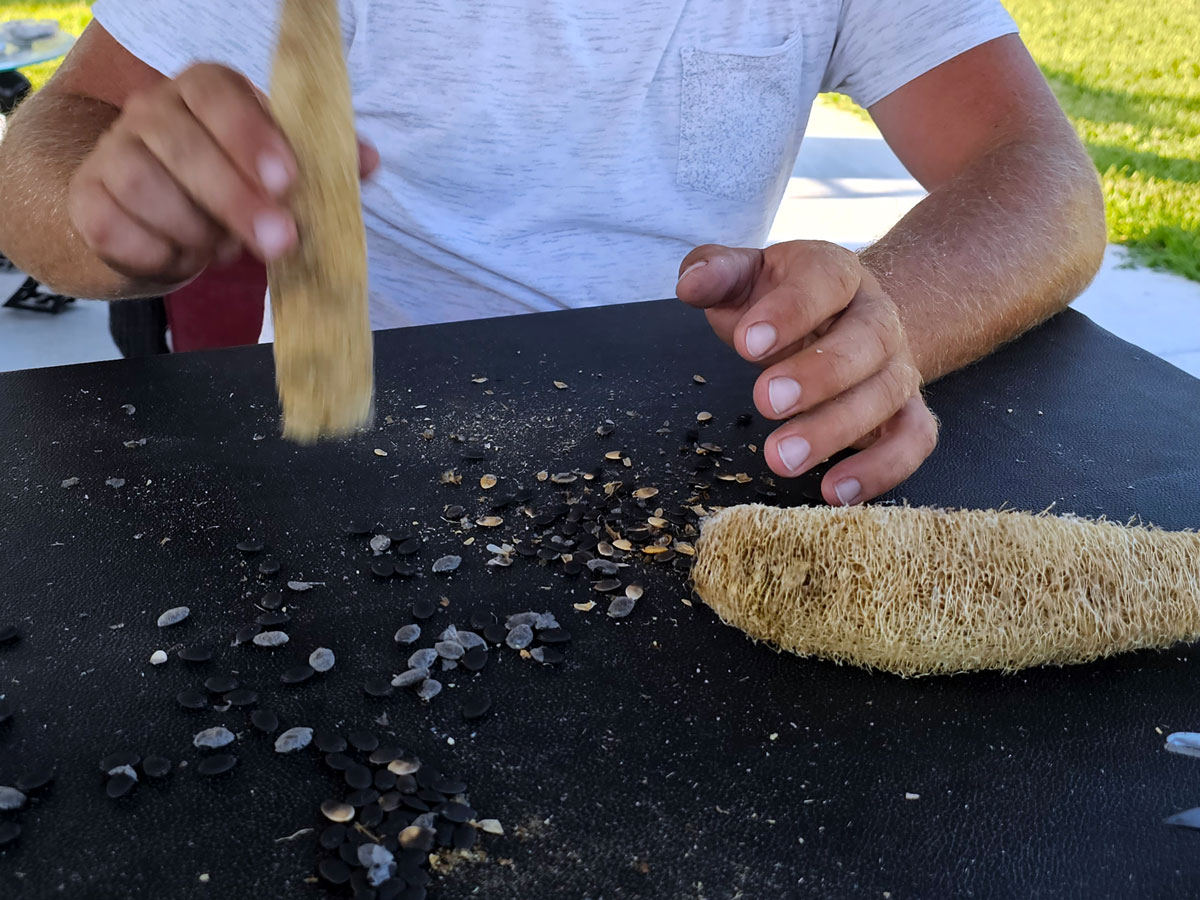
Once the fruits have started turning from green to brown and the husk is drying, you can harvest them. I prefer to leave mine on the vine until they are a hard brown husk.
If you need to harvest them earlier, cut them off leaving a stem of several inches. Hang them to dry in a well-ventilated area. Once the husk turns brown then you can follow the additional steps below.
- Cut of both ends of the gourd.
- Peel off the dry skin and dispose of it in your compost.
- Shake out the numerous black seeds.
- You can now use the gourd as-is.
If you prefer, you can clean the gourd in a mild solution of bleach. This will kill any bacteria or fungi as well as brighten the gourd.
Use four tablespoons of bleach to one gallon of water to soak them 20 minutes up to one hour. Then rinse them again with clean water. Set them out to dry (preferably in the sun). Once they are thoroughly dry, you can store them in a mesh or cloth bag. I keep mine in a wicker basket in the closet.
Harvesting Luffa to Eat
Harvest your edible luffa when it is between 6 and 10 inches. It should have a dark green color and look firm, like a cucumber. Wash and dry the fruit. Keep stored in the refrigerator in a towel in an air-tight container. Use within a few days.
Common ways to prepare luffa include: stir-fry, stewed, pickled, or even peeled and eaten fresh. It is a good substitute for most recipes that call for cucumbers.
In Conclusion
Luffa is an all-purpose fruit that you can eat, use as a sponge, create crafts, and even decorate with!
It’s easy to grow in sub-tropical and tropical climates. You can even grow it in shorter hot-weather growing seasons by starting early in a greenhouse.
The plant requires little care and has only a few pest and disease concerns.
Luffa is a must-have plant for any homestead garden or food forest.
FAQs
Luffa plants produce about 5-6 fruits. Consider how many gourds you may want for sponges or for eating. Anticipate some damage may occur due to weather, pests, or diseases then plan accordingly.
Yes, you can! Your pot will need to be at least 12 inches deep and wide. Use any standard potting mix. Do not use topsoil – it will be too heavy and not drain well. Only plant one luffa per pot. You will still need to trellis the vine too, so it’s best to place the pot at the base of a trellis.
No, they are not considered invasive in the United States, even though they are non-native. They are an annual plant and will drop seeds and regrow the following season.
[…] haven’t planted them yet, check out my complete guide to starting and growing luffa from seed: How to Grow Luffa in Your Garden – but if you’re ready to begin harvesting – this guide will walk you through […]